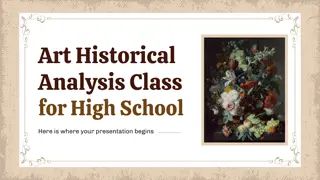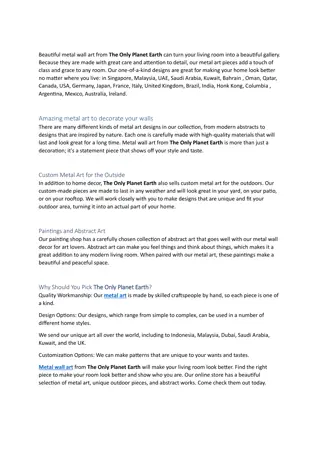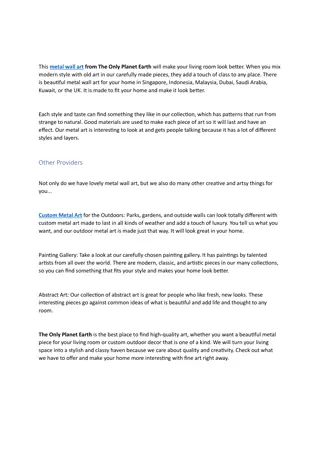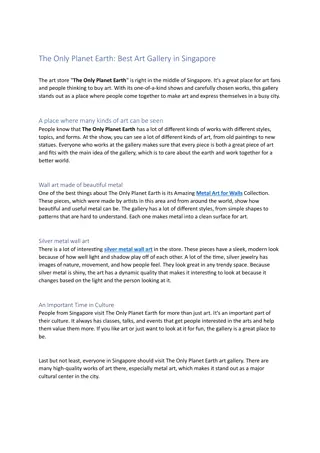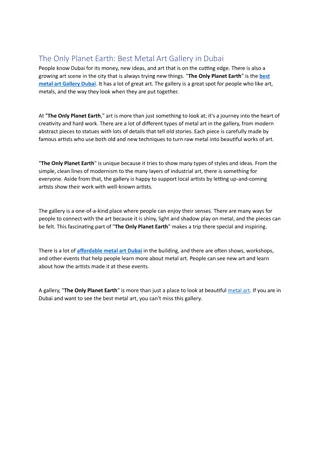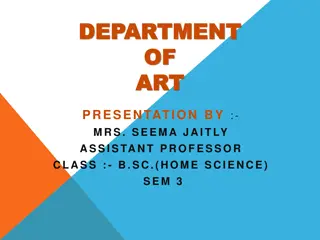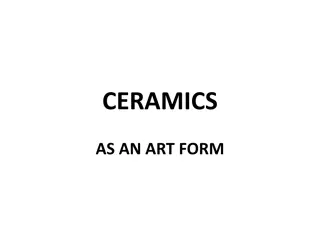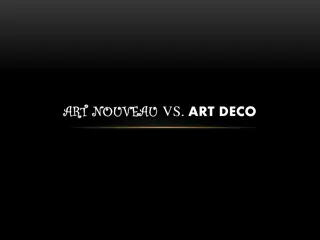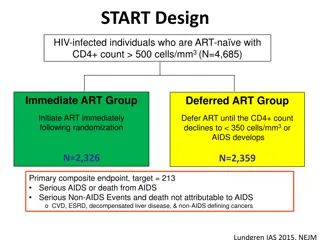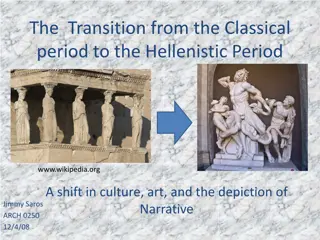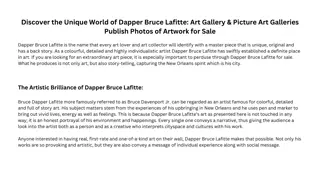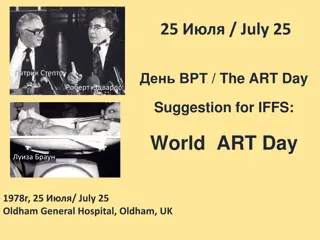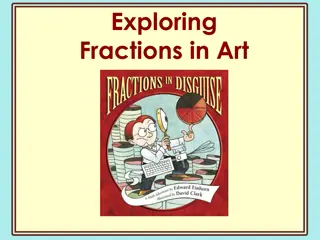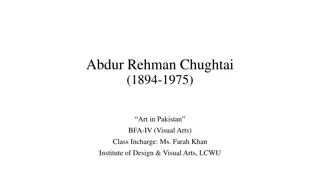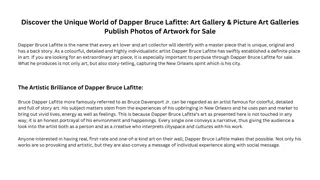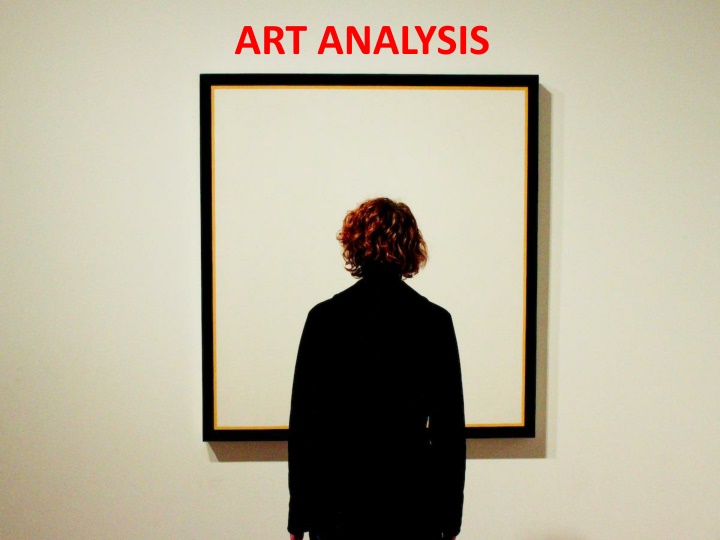
Exploring Art: Analysis, Critique, and Interpretation
Dive into the world of art analysis with this comprehensive guide covering artwork critique forms, description analysis, human figures, group of figures, historical context interpretation, and in-depth artistic element analysis. Learn how to dissect and interpret art pieces effectively.
Download Presentation

Please find below an Image/Link to download the presentation.
The content on the website is provided AS IS for your information and personal use only. It may not be sold, licensed, or shared on other websites without obtaining consent from the author. If you encounter any issues during the download, it is possible that the publisher has removed the file from their server.
You are allowed to download the files provided on this website for personal or commercial use, subject to the condition that they are used lawfully. All files are the property of their respective owners.
The content on the website is provided AS IS for your information and personal use only. It may not be sold, licensed, or shared on other websites without obtaining consent from the author.
E N D
Presentation Transcript
Artwork Critique Form List the following information about the artwork you choose to critique: Artist_________________________________ Title__________________________________ Date__________________________________ Medium_______________________________ Dimensions (cm: h. x w. x d.) Name of collection (museum?, private?) The name of the place you viewed the work (museum, magazine, online)
Description Analysis Interpretation Judgment
Description Study the piece of art for 2 minutes. Form an overall impression of the art and then examine individual items. Next, divide the art into quadrants and study each section to see what new details become visible.
Description 1) Does the work appear to be Realistic, Abstract, or Nonobjective? 2) What type of subject is it (genre)? 3) List all the literal objects you see in the composition (trees, people, animals, shapes, mountains, etc.). What activities are happening in the artwork? Who is in the art? Who or what is the center of attention in the art?
Human figure Consider: Age Pose, gestures Costume, attributes Movement Body build Skin quality Facial expression Psychological focus Relationship of drapery or other clothing to body
Group of figures Consider: Physical and psychological relationships among the figures Movement from figure to figure How large are figures within the frame? How much of the figure is shown?
Description 3) What does the art say about the time period in which it represents? Write a paragraph of 8-10 sentences describing the piece of art in your own words.
Analysis Consider the significant aspects of the art elements that are present and describe them: Line Color Shape Space Texture Form Value Composition, perspective
Analysis Discuss how the artist manipulated the art elements to create the following principles: 1. Movement 2. Unity/Harmony 3. Variety 4. Balance 5. Emphasis 6. Contrast 7. Proportion 8. Pattern/Rhythm
Interpretation 1.What do you think the artist was trying to say through this art piece? 2. Does the artist give you any clues in the artwork about message of the art? 3. Do you think there are things in the artwork that represent other things - symbols? Colors? Objects? What?
Interpretation 4. What does the artwork mean to you? 5. What feelings do you have when looking at this artwork? List 5 adjectives that describe any emotions you feel while looking at the art.
Judgment 1) Do you like this artwork? Why? You should be able to give some reasons why you like or do not like a work of art. Look over what you wrote for description, analysis, or interpretation and explain how this information affects your judgment. 2) What is the mood of the art?
Judgment 3) Do think this is an important work? To whom do you think it would be important? Why? 4) Would you display this artwork in your home? Should it be in a museum? Why? 5) Is there something about this work of art that you think should have been done differently? What and Why?
Final step What questions does this piece of art raise in your mind?
Gustav Klimt. Portrait of Adele Bloch-Bauer I 1907. Oil, silver, and gold canvas. 138 cm 138 cm Neue Galerie, New York on


